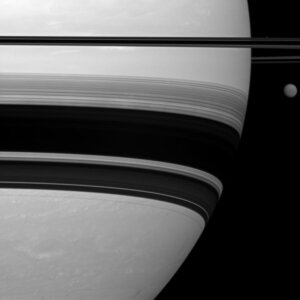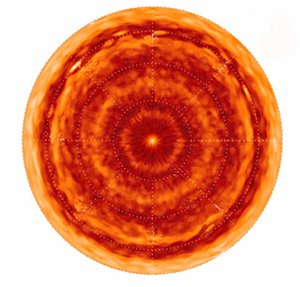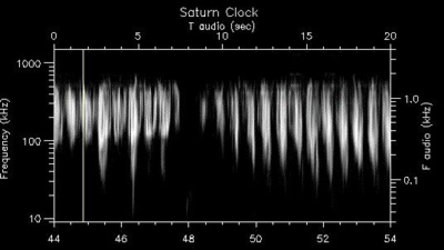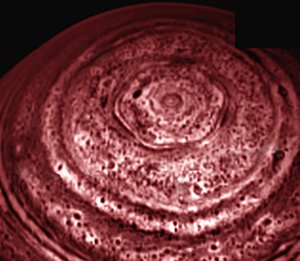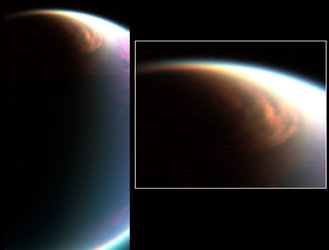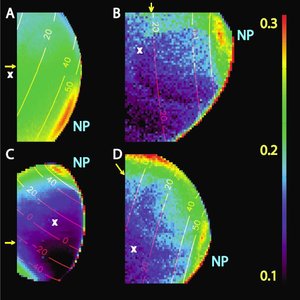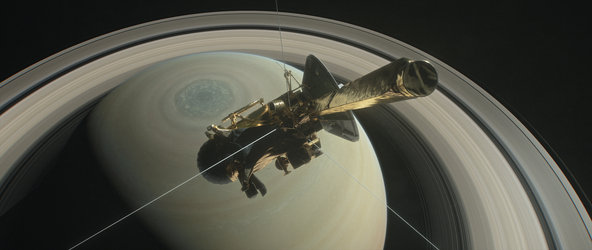Notes for editors
“The origin and evolution of Saturn’s 2011–2012 stratospheric vortex” by L. Fletcher et al., is accepted for publication in Icarus.
A complementary paper by B. Hesman et al. is accepted for publication in the Astrophysical Journal.
The paper focuses on the huge spike in ethylene detected with the high temperatures bound inside the giant vortex. Ethylene gas had never before been observed on Saturn, but the high temperature of the beacon enabled the gas to be detected.
Further details can be found in NASA's news release.
The Cassini–Huygens mission is a cooperative project of NASA, the European Space Agency and the Italian Space Agency. The Jet Propulsion Laboratory, a division of the California Institute of Technology in Pasadena, manages the mission for NASA’s Science Mission Directorate, Washington, DC.
Animation captions
Download Evolution of infrared hotspots in Saturn’s springtime storm
Download Looking down on Saturn’s storm
Animations showing the evolution of Saturn’s ‘Great Springtime Storm’ at infrared wavelengths between January 2011 and March 2012. The infrared hotspots are superimposed on a visible light model of Saturn, and are shown in a side view and a top view of the planet.
As clouds broke out in Saturn’s stormy troposphere (true cloud pattern not represented in the animations), waves of heat travelled hundreds of kilometres upwards, depositing their energy as two vast ‘beacons’ of hot air in the stratosphere. Both hotspots travelled in a westerly direction around the planet, but the larger of the two travelled much faster, lapping the smaller one before they merged to create an enormous vortex that for a brief period exceeded even the size of Jupiter’s famous Great Red Spot. The giant vortex was visible only to infrared cameras, and persisted long after the clouds from the storm had faded away. The beacon laps the planet once every 120 days and is expected to have dissipated by the end of 2013.
The images comprise thermal data collected by NASA/ESA/ASI’s Cassini spacecraft, ESO’s Very Large Telescope and NASA’s Infrared Telescope Facility.
Credits: ESA–C. Carreau
For further information, please contact:
Markus Bauer
ESA Science and Robotic Exploration Communication Officer
Tel: +31 71 565 6799
Mob: +31 61 594 3 954
Email: markus.bauer@esa.int
Leigh Fletcher
University of Oxford, UK
Email: fletcher@atm.ox.ac.uk
Nicolas Altobelli
ESA Cassini–Huygens Project Scientist
Tel: +34 91 813 1201
Email: nicolas.altobelli@sciops.esa.int






